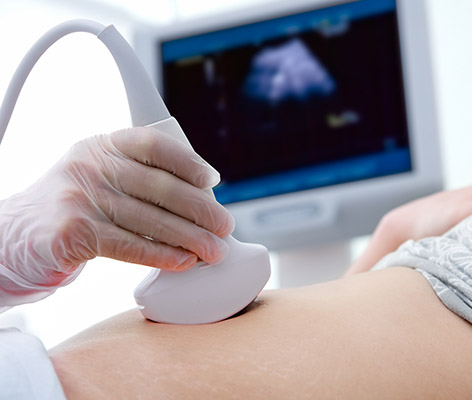Infertility Causes

Infertility Diagnostic Tests
The Tests
1. Cycle Day 2, or 3 Blood Tests
These tests are conducted on day 2 and 3 of your cycle. The first day is defined as having no spotting and therefore a constant flow. The doctor will take the blood and test for various hormones and levels. These tests can tell how sensitive the ovaries are which helps to know the dosage of fertility drugs they can handle. They will also test for thyroid levels here since thyroid can be a cause of irregular ovulation.
2. HSG Test
An HSG or Hysterosalpingogram test can be performed to better see the uterus, and fallopian tubes. The test is completed by injecting dye into your uterus which shows up in an x-ray. The dye then outlines the uterus, tubes, and pelvic cavity. You may experience cramping, and need to be on antibiotics. These test run after menstruation, but before ovulation, typically between days 6 and 12 of your cycle.
3. LH Surge/Ovulation Predictor Kits
These kits provide a test stick which predicts ovulation. 10 days from the start of your menstruation, you will be asked to begin checking your urine every morning with your test stick. If the stick test is positive, you should ovulate within 24-36 hours. The test helps to tell if you are releasing an egg at the correct time in your cycle.
4. Progesterone Level
Progesterone is a hormone that helps maintain healthy endometrial lining during pregnancy. This level is conduct through a blood test which is typically drawn a week after ovulation. The healthy progesterone level stands at 10ng/ml or above.
5. Water Ultrasound
Also known as a sonohysterogram, water ultrasounds examine the uterine cavity. Possible abnormalities such as polyps of fibroids can hurt chances of pregnancy. The ultrasound is typically performed between days 6 and 12 of your cycle, and is a quick 10 minute in-office routine.
6. Semen Analysis
Male infertility accounts for a significant number of infertility cases. Our specialists will examine the sperm count, sperm motility, sperm size and shape, semen volume and other things to try and identify issues.
7. Pelvic Ultrasound
Examining the uterus, ovaries and pelvic area is an important part of infertility diagnostics for a woman. An ultrasound can identify fibroids, polyps, ovarian cysts and polycystic ovaries.
8. Other
Depending on your case, other tests may be conducted for infertility help.
Contact Green Valley today if you are having trouble getting pregnant. Infertility is common and can be fixed when the root cause is known.

Free Consultation
To schedule your consultation, call our offices at (702) 722-2229
Preparing for your infertility consultation
It’s our pleasure to welcome you to Green Valley Fertility Partners. We are here to help you through the process of diagnosis and treatment, starting with your initial consultation with your physician and patient coordinator here at our clinic. The goal of this first visit is to thoroughly evaluate your medical history, outline a diagnostic plan to determine the specific needs of your case, and to design a treatment plan that is customized to your individual situation. Your physician and patient coordinator will be spending one-on-one time with you during this initial visit, making sure you are an informed and knowledgeable participant in your treatment.
To assist you in preparing for your consultation, we have outlined some commonly asked questions regarding what to expect during and after your consultation, materials and information to bring with you, and important pre-consultation reminders.
To ensure we provide you with the best care possible, we kindly ask all new patients to download and complete our questionnaire.
Simply click the link below to access the questionnaire. Once filled out, please email the completed form to Ivy at ivy@gvflv.com
Download Questionnaire: New Patient Form
Your Title Goes Here
Your content goes here. Edit or remove this text inline or in the module Content settings. You can also style every aspect of this content in the module Design settings and even apply custom CSS to this text in the module Advanced settings.
How should I prepare for the initial consultation?
Please bring your driver’s license and insurance cards to your appointment. After your consultation, our billing department will call your insurance and find out what coverage, if any, you may have for fertility diagnosis or treatment. Prepare to bring with you a copy of your medical records from your OB/GYN, primary care physician, or any other fertility programs that add to your medical history. This copy will be for the office to keep on file as a part of your medical record, so make sure that you have your own personal copy as well. Your doctor can also fax these records to us directly, but arranging this will be your responsibility.
Should my partner come with me for this visit?
Because this is a time for asking clarifying questions, we invite and encourage your partner to accompany you to your initial consultation both to learn with you, and to support you. However this is ultimately your decision, your partner’s presence is not necessary during this visit.
Can I meet with a financial counselor to discuss payment options?
Do you take insurance?
What forms do I need to complete before my initial consultation?
How soon can I schedule my initial consultation?
Typically we will be able to schedule your appointment within 1-3 days after your call to the front desk, sometimes sooner.
How long does it take to determine the diagnosis and construct a treatment plan?
How long will my first visit take?
Do you treat patients outside of Southern Nevada?
What will be the total cost of my treatment and what are my options for payment?
What tests are administered at my initial visit?
We do not typically do any testing as part of your initial consultation. However, at your second appointment with Dr. Fisch he will most likely want to do an ultrasound to assess your ovaries, and may also include a few standard blood tests, typically including the following:
- FSH (follicle stimulating hormone)
- LH (luteinizing hormone)
- Estradiol
- TSH (thyroid stimulating hormone)
- PRL (Prolactin)
Note: Your doctor may recommend more testing, based on your medical history and assessment. You can choose to have testing done at any time before beginning treatment.
After our diagnosis on the first visit, how long will it be until we can start treatment?
How long should I expect to undergo treatment?
What are your success rates?
How many times will I have to attempt IVF before becoming pregnant?
What is the rate of success at your clinic for IVF per embryo transfer? What is the number of embryos generally transferred each time?
What is the monitoring process for my treatment, and how frequent will it be?
Is it always my doctor who performs monitoring during my treatment, or will other physicians or nurses be monitoring me as well?
Yes, At GVFP , Dr. Fisch performs all ultrasounds and procedures in the office.
We hope to see you soon!
Let's Talk
Address
2950 W Horizon Ridge Parkway, Henderson, NV 89052
info@greenvalleyfertility.com
Phone
(702) 722-2229

